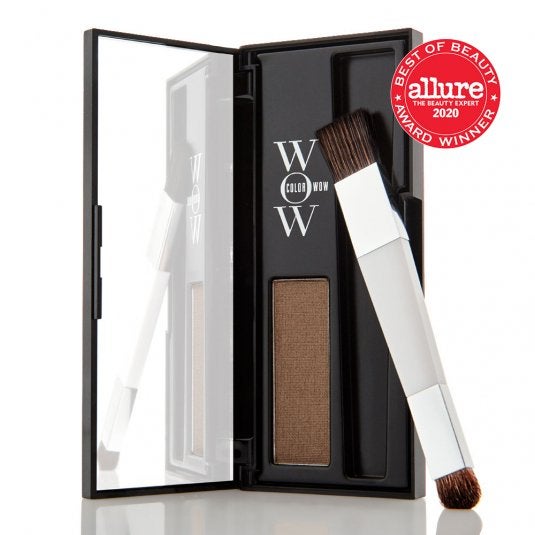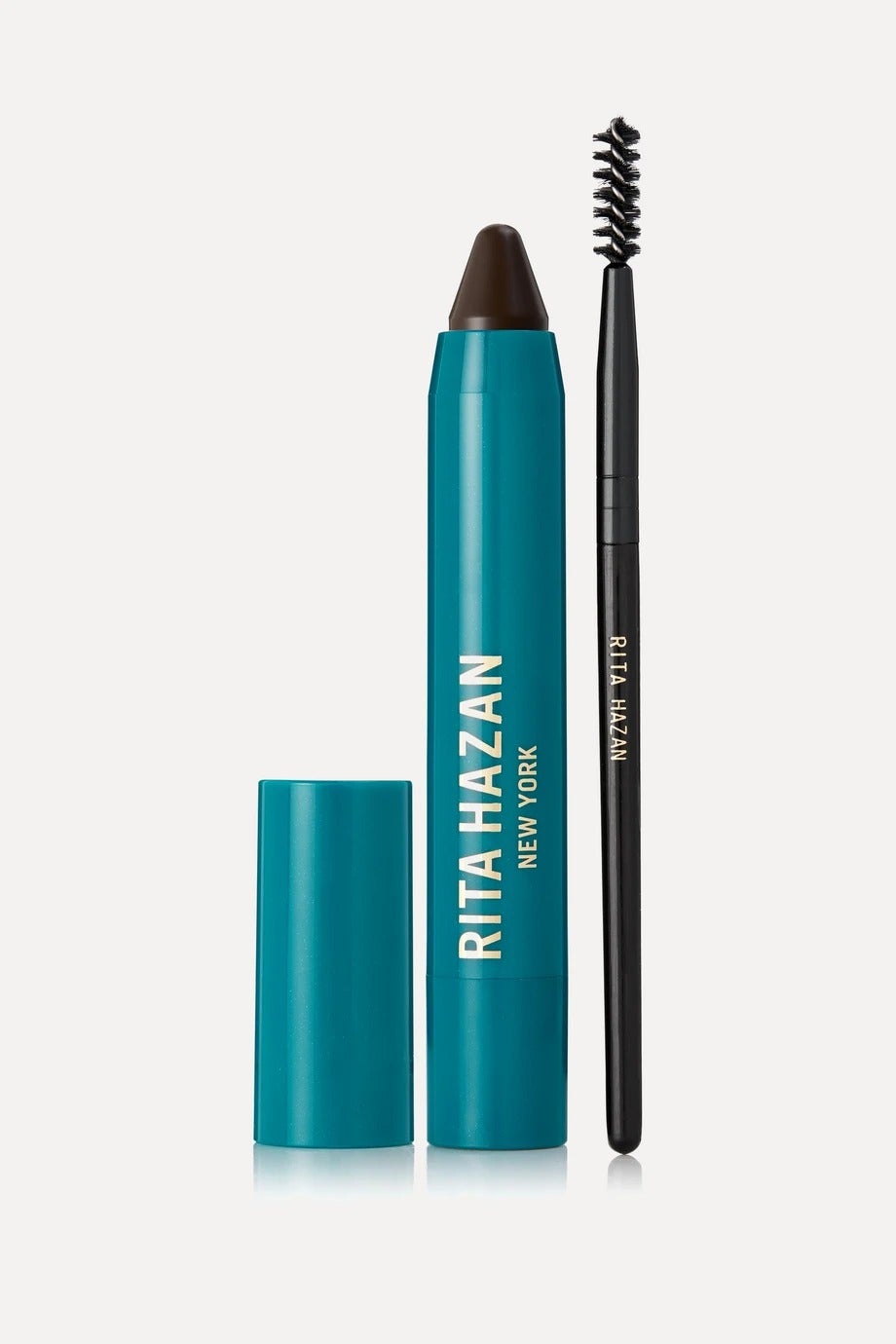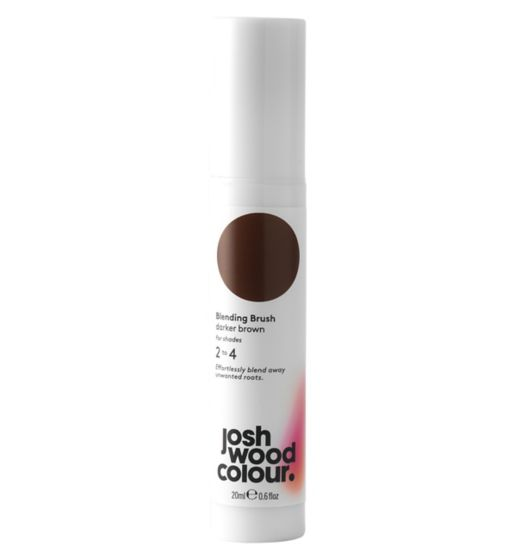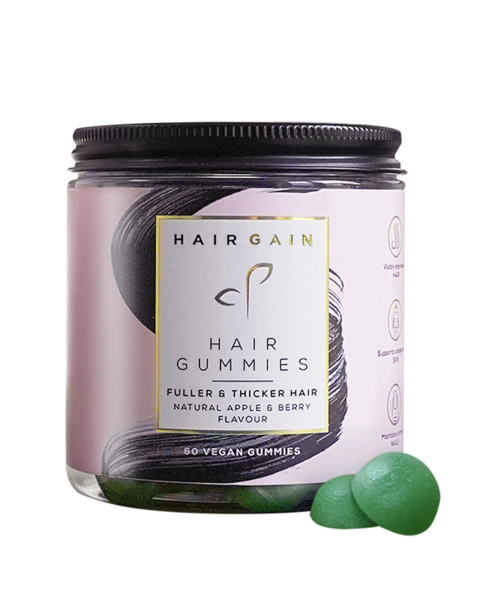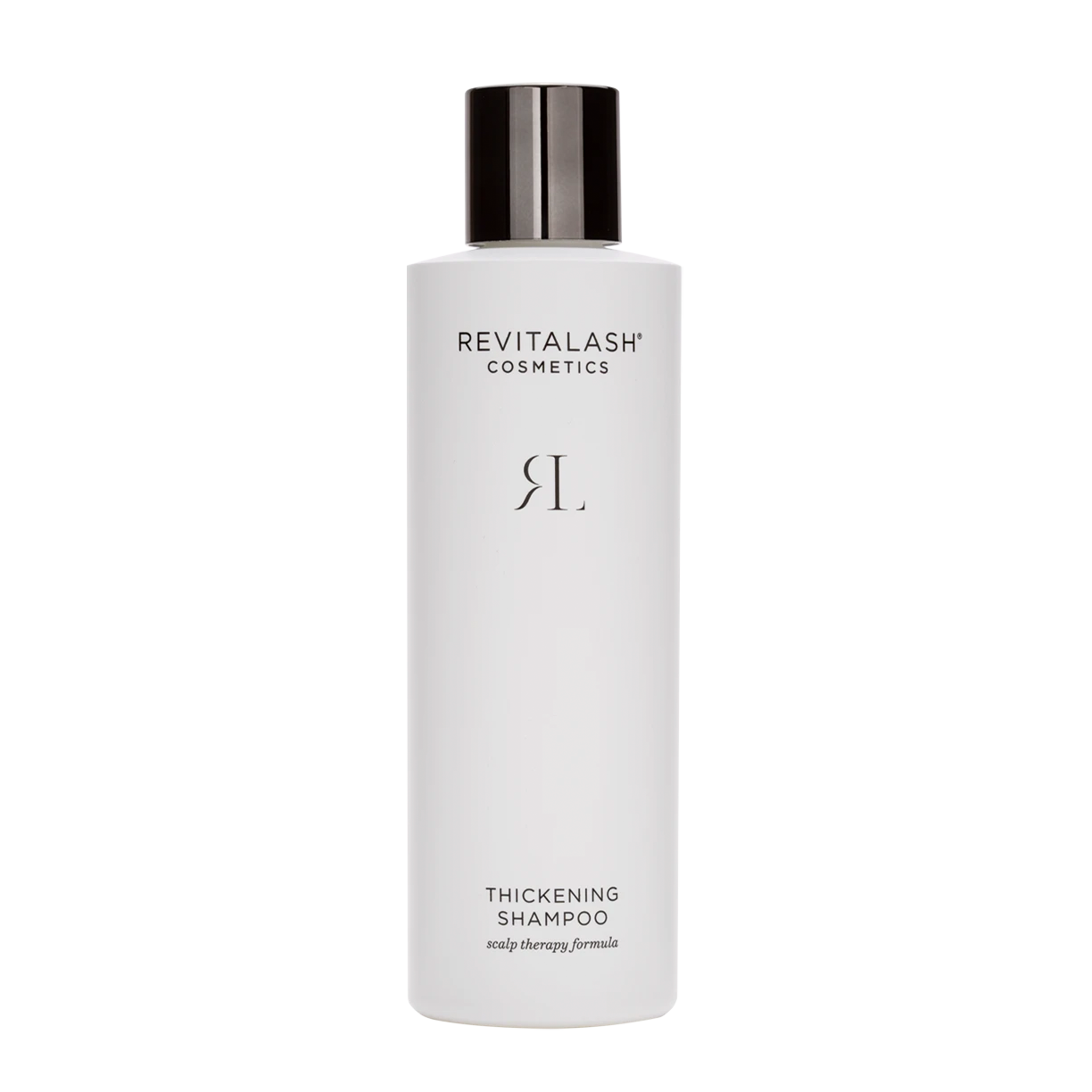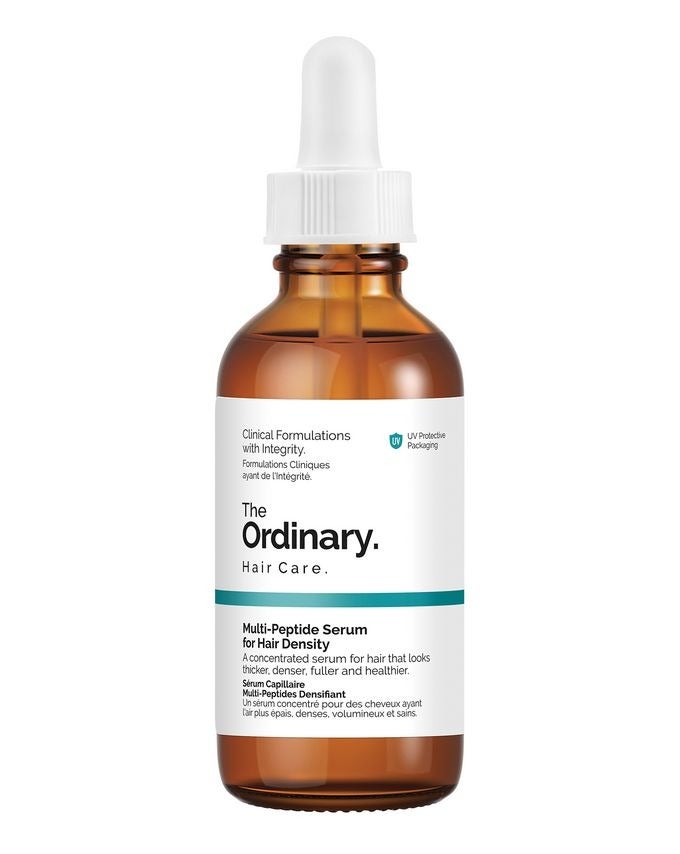Receding Hairlines Aren’t Just A Male Issue — They Affect Women, Too
Photographed by Hayleigh Longman
Given that we've been staring at ourselves on Zoom for over a year now, it's only natural that we have become hyperaware of changes to our appearance. Recently, I noticed that my hairline was starting to thin out, leaving the front of my blonde lengths looking patchy and lacklustre. Though a receding hairline occurs gradually over time, at 25 years of age it left me feeling self-conscious and disheartened. As someone who practically walked out of the womb rocking a high ponytail, the idea that my hairline was running away from me was a hard pill to swallow.
AdvertisementADVERTISEMENT
Commonly, a receding hairline is seen as a men-only issue. A quick Google image search presents hundreds of before-and-after pictures of men accompanied by links to helpful advice but while I frantically searched for miracle supplements to help my own hair recover, I realised that information about receding hairlines and how they affect women specifically is very thin on the ground (no pun intended). So with some top trichologists on board, I set out to discover what exactly is causing our receding hairlines and how we can combat the issue.
What is traction alopecia and can it cause a receding hairline?
I discovered that my love of up-dos could be part of my hairline problem, as sustained hair tugging is known to weaken hair health. Officially referred to as traction alopecia, the condition is one of the most likely causes of a receding hairline in younger women, according to trichologist Kate Holden.
"Traction alopecia is hair loss caused by persistent tension and pulling on the hair follicle, which is typically caused by tight hairstyles such as braids, ponytails or buns, or overuse of hair extensions," says Kate. According to the British Association of Dermatologists, Black women in particular are at greater risk of developing traction alopecia thanks to wearing braided, protective styles over long periods of time. Kate's advice for treating the condition includes ditching or minimising hairstyles that pull at the hairline (try looser protective styles instead) and throwing away clip-in extensions. "If you stop doing tight hairstyles, often, the hair will recover gradually, although there is a risk of permanent hair loss if you have been wearing tight hairstyles for many years," warns Kate. She also recommends following a good haircare routine to help reduce breakage and to protect recovering hair from any further damage. "I would advise using a deep conditioner once per week, leaving your hair to air-dry after you wash it. Also, avoid bleaching and heat styling like curling or straightening your hair." You may also find regular scalp massages with natural oils helpful for stimulating hair growth around your edges.
AdvertisementADVERTISEMENT
Can stress cause a receding hairline?
Traction alopecia isn't the only cause of receding hairlines in women. Currently, many of us are experiencing hair loss in this area due to sustained stress. Trichologist Stephanie Sey explains how stress-induced hair loss (known as telogen effluvium) can be triggered by things ranging from undergoing major surgery to living through difficult events, such as a pandemic. "Hair loss usually appears evenly throughout the scalp but you will often find that it can affect the edges of the hair a bit more," says Stephanie. Stress itself shocks the hair into moving from the growing phase to the resting phase, meaning months after the index incident, the hair may start to fall out. "The hairline won't be completely borderless and you won't experience a complete recession but you will probably see small regrowing hairs around the hairline from up to three months after the event," Stephanie adds.
In a similar vein, stress-induced conditions such as trichotillomania can also contribute to hair loss around the hairline. The compulsive condition sees sufferers find relief in pulling out hair from spots on their head, eyelashes and eyebrows. While Stephanie notes that the hair loss is purely related to where the affected person tends to pull, anecdotal research shows how common bald spots around the hairline can be. Head to Twitter or Reddit and you'll spot countless threads written by women who have shared their experiences of receding hairlines.
AdvertisementADVERTISEMENT
Stress-related hair pulling is something 28-year-old Jasmine* has experienced recently. "I have a habit of absentmindedly twirling and subsequently pulling my hair out when I'm stressed or nervous and it's almost always around the front of my hairline," Jasmine tells R29. "I'm right-handed and the right side of my hairline and temple are very sparse. It makes styling really difficult and people always point it out." Her hair pulling makes her shy away from interaction and most recently video calls, as the stress of lockdown has exacerbated the habit. Often seen most severely in young women, treatment for the hair pulling condition is based on identifying the underlying issues causing the stress or anxiety. Jasmine says that practising mindfulness, such as breathing techniques, helps. Experts also recommend distraction techniques such as a fidget bracelet, and cognitive behavioural therapy (CBT) to help ease severe symptoms.
Why does hair fall out after pregnancy?
Aside from stress, one of the biggest causes of hair loss in women can be linked to childbirth. Recently, model Ashley Graham took to Instagram to show followers how her hairline is progressing after experiencing hair loss after giving birth. According to Lloyds Pharmacy, pregnancy boosts the production of oestrogen, a hormone which causes the scalp to retain hair it would have normally shed. After birth, when oestrogen levels decrease, the excess hair falls out over a short period of time, leaving many thinking they are losing large sections of hair.
AdvertisementADVERTISEMENT
New mum Sabreen, 35, said she was entirely unaware of postpartum hair loss until she had her first baby six months ago. "When I first noticed it, it was horrendous and I hated it," she told R29. "I've always had thick hair and the fact it was affecting my hairline made it look like my hair was thinning massively." Months later, Sabreen's hairline is starting to recover, though she notes the regrowth is taking the form of small, spiky baby hairs, similar to Ashley. While the effects of postpartum hair loss are temporary, there are things that can be done to aid the recovery process. Experts recommend stimulating head massages using scalp exfoliators or scalp brushes, a diet rich in protein and iron, hair supplements such as Viviscal and using thickening shampoo to give hair a boost while your hairline returns to its usual state.
Can polycystic ovary syndrome cause hair loss around the hairline?
For some women, hair loss around the hairline and temples can also be related to more permanent hormonal imbalances. Among these is polycystic ovary syndrome (PCOS), which affects one in five women in the UK. While the condition is most known for causing irregular periods and acne, another common side effect is hair loss. This is due to the body creating excess levels of androgens (male hormones). "Women with PCOS tend to have two distinct types of hair problems," consultant dermatologist Dr Anjali Mahto told R29. "They often suffer with excess facial or body hair (often in a similar pattern to men – known as hirsutism) but at the same time may notice shedding of scalp hair, often manifesting as thinning over the crown and temples."
AdvertisementADVERTISEMENT
This is something that 18-year-old student Hajar has found tough to grapple with since being diagnosed with PCOS. "My hair is something so sacred and beautiful to me," she says. "Even though I wear a hijab and no one can really see my hair, I take huge pride in it. When I was first diagnosed, I would take off my hijab after a long day and see that my hairline was so rough and thin. I felt like somehow it was my fault." Hajar mentions her hair loss has made it difficult for her to come to terms with her PCOS, affecting her self-esteem massively.
Similarly, 21-year-old student Fadjy says her hair thinning was a huge blow to her confidence after being diagnosed with PCOS. "It was hard because there weren't a lot of people my age who I knew were going through this," she tells R29. "To make matters worse I was experiencing hair growth on my chin and on my neck, very fast weight gain and acne that just wouldn't budge." Eventually, Fadjy chose to shave her head and opt for wigs instead. Combined with taking vitamin supplements and applying castor oil regularly, she says this has vastly improved her situation. "Thankfully, I've seen a significant difference in my hairline. It's growing back thicker and stronger which makes me feel like shaving my head wasn't in vain. I'm not quite where I want to be with it, but I'm certainly a lot happier now."
AdvertisementADVERTISEMENT
When it comes to PCOS and hair loss around the hairline, there are a number of potential solutions. According to the NHS, certain types of combined oral contraceptive tablets can help ease PCOS-related hair loss. Many work to block the effects of male hormones like testosterone, which in turn suppresses shedding. Head to your GP, who will be able to advise you further. Dr Mahto also pinpoints medication such as spironolactone for PCOS-related hair loss around the hairline and temples. "Spironolactone is licensed in the UK for treatment of blood pressure often in older patients with heart problems," says Dr Anjali Mahto. "Off-label, spironolactone can help potentially improve scalp hair growth." Dr Mahto says that spironolactone should only be prescribed by a consultant dermatologist with experience in its use, as it is an unlicensed treatment for hair thinning.
How can you conceal a receding hairline?
The sheer volume of women suffering with hair loss is clear to see on social media, with many vloggers posting about their experiences. Stylist and digital influencer Chriselle Lim is one of the most notable voices in this space. She regularly discusses her hair journey in YouTube videos and most recently on TikTok, where the #recedinghairline tag has garnered over 26.8 million views and includes lots of women. "I love sharing about my insecurities online because I want my followers to know that we all have our own insecurities and that's okay," says Chriselle. She recently posted a video showing how she uses makeup to fill in her hairline with a combination of eyeliner, contour sticks and powders, and it has since racked up 670.9k likes.
AdvertisementADVERTISEMENT
@chrisellelim How I fix my receding hairline (forehead) with makeup! My trick when I pull back my hair! #makeuphacks #getthelook #makeup #beauty #asmr #beautyhacks
♬ BDASH Breathe - BDash
"I've always had a receding hairline," continues Chriselle. "It was something I was born with and the cause was identified as genetic, though the issue did worsen after having my daughter six years ago." Chriselle says she has tried multiple treatments to thicken her hairline and settled on microblading, a treatment offered by many clinics in the UK, including Tracie Giles and Sian Dellar in London. Chriselle says the experience was great and very subtle but it didn't last as long as she thought it would. Of course, semi-permanent makeup does require multiple sessions and regular top-ups. Prices may also vary depending on your chosen clinic or expert.
For those who would rather explore temporary hair makeup, there are plenty of root touch-up products on the market that can help to conceal a receding hairline. Mirroring the colour of the hair to suggest thickness, some of the most popular picks include the brush and powder compacts from Colour Wow and the built-in blending brush powders by Josh Wood Colour. Both are so easy to apply. If you want to build even thickness across your whole head, concealing root sprays such as Charles Worthington Instant Root Conceal, £9.99, and L'Oréal Paris Magic Retouch, £5.99, also have great reviews and offer a wide variety of hair shades. A more hands-on product for smaller areas would be touch-up sticks such as Rita Hazan's Root Concealer, £20. Adored among top hairstylists, it boasts water-resistant pigments that can easily fill in gaps along the edges of the hairline and lasts for hours.
AdvertisementADVERTISEMENT
Which hairstyles are best for covering a receding hairline?
For those looking for a quick fix, learning which hairstyles work best can help you feel more positive about your hairline. According to Anita Rice, cofounder of hair salon Buller and Rice, long hairstyles with stronger partings are best avoided in order to keep the hair from being dragged down and exposing sparse spots. Instead, she recommends shorter haircuts to make hair appear thicker and fuller. "Try to keep your length above the shoulders," says Anita. "Soft waves and tousled styles also give the appearance of fullness and create soft lines around the face," she continues, adding that TikTok's famous curtain bangs could be a great look to try. "Fringes and high shaping around the face are another great way to disguise receding hairlines and help promote volume," says Anita.
It's also important to make sure that your hair has a healthy start. Kate highlights how diet can play a part in promoting gradual and long-lasting hair growth. "Making sure that you have a healthy balanced diet, including enough protein and iron, will enable the hair to grow as strong as possible and protect against common causes of increased hair shedding in women," she says. It's also important to pinpoint the exact cause. "If you think that your hair loss might be related to genetics, hormones, illness, stress or another factor, it is best to speak to your GP, a trichologist or a dermatologist so you can get correct advice about the best treatment options," says Kate. "Hair loss among women is very common so you don't need to feel worried about reaching out."
AdvertisementADVERTISEMENT
Coming to terms with a receding hairline can be incredibly difficult and from my own experience, a long and emotional process. Knowing that there are many effective steps that can be taken to ease the appearance of a thinning hairline is helpful. While I'm still at the very beginning of my hair recovery journey, I am excited to track my progress, having recently incorporated hair vitamins, collagen supplements and thickening treatments into my daily routine. Though I am conscious that I still need a definitive answer of causation from an expert, for now, I am happy exploring touch-up options and trying out TikTok tips at home. Here's hoping that I will be back to rocking my high ponytail in no time.
Refinery29's selection is purely editorial and independently chosen – we only feature items we love! As part of our business model we do work with affiliates; if you directly purchase something from a link on this article, we may earn a small amount of commission. Transparency is important to us at Refinery29, if you have any questions please reach out to us.
AdvertisementADVERTISEMENT







